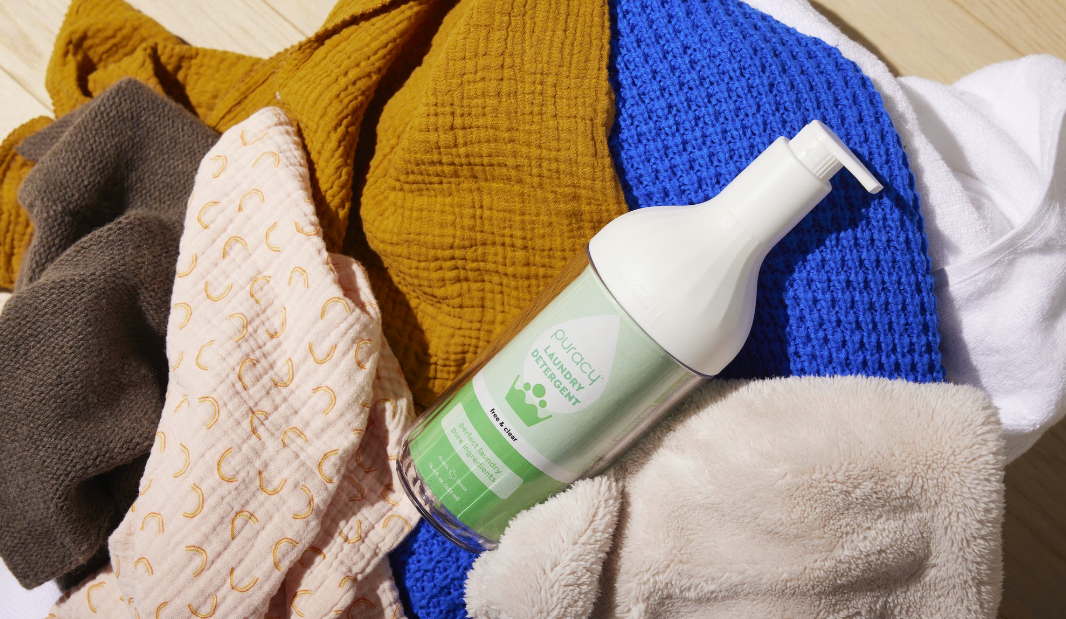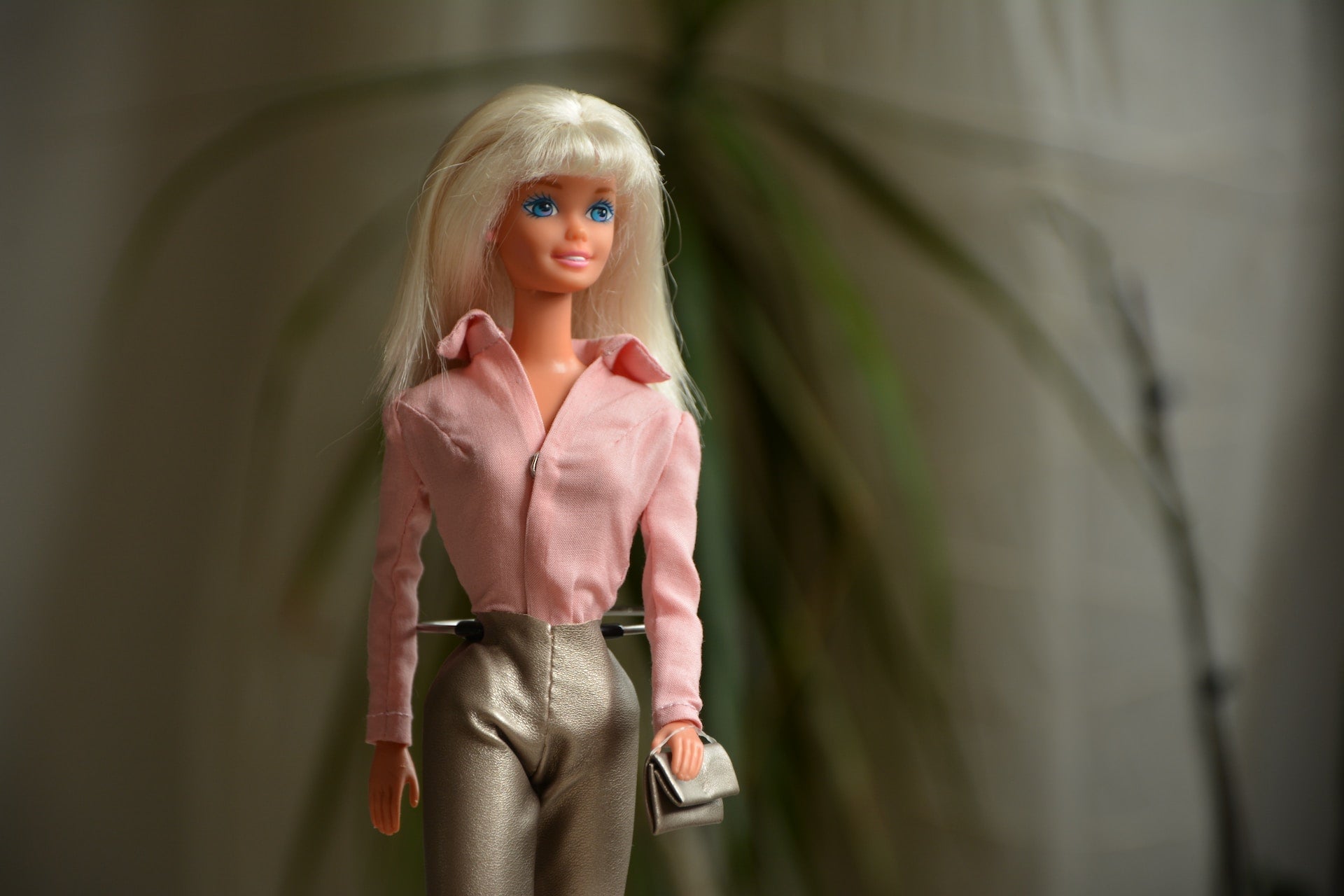
Why Your Laundry Detergent Should Be 1,4-Dioxane-Free
When it comes to laundry detergent, we're proud that our natural, plant-based formula is free of dangerous ingredients and toxins, especially 1,4-Dioxane. Deemed a potential carcinogen by the FDA, 1,4-Dioxane is found in many major detergents and has the potential to penetrate skin when used in cosmetics. Learn why we never use this ingredient in our detergent, as well as why this compound is harmful.
List of Best 1,4-Dioxane-Free Detergents

Find the best detergents that do not contain 1,4-Dioxane.
- Puracy Natural 10x Laundry Detergent
- Optimized for those with skin sensitivities and allergies, this natural laundry detergent uses plant enzymes to eliminate stains, odors, and build-up without dulling colors.
- Puracy Clean Can Laundry Detergent
- Want to give your cleaning routine a sustainable upgrade? Use our same 10x concentrated formula but in our infinitely recyclable aluminum design.
- Natural 10x Laundry Detergent Refill Pouch
- Our detergent also comes in eco-friendly refill pouches, which allow you to minimize waste while maximizing savings.
The Best 1,4-Dioxane-Free Laundry Detergent

Instead of 1,4-Dioxane, the ingredients found in our Natural Laundry Detergent are gentle and naturally derived, yet still effective against the toughest stains and odors.
Powerful Plant-Based Enzymes
Our Detergent is powered by 4 plant-based enzymes: protease, amylase, mannanase, and lipase. These proteins break down stains and odors, leaving fabrics stain-free and fresh without dulling colors.
Natural Surfactants
Our Natural Laundry Detergent features cocamidopropyl betaine, a coconut-derived cleanser that rinses away dirt and grime. It's a natural alternative to many sulfates, which can irritate and dry out skin.
Natural Fragrances and Perfumes
Our Detergent without 1,4-Dioxane features natural, plant-derived fragrances and scents. We chose this over artificial, synthetic fragrances which can irritate sensitive skin and those with allergies.
What is 1,4-Dioxane?

A likely human carcinogen, 1,4-Dioxane is a chemical compound (also classified as ether) that can be found in groundwater throughout the US.
Common Concerns
- Cancer: high risk
- Allergies and Immunotoxicity: low risk
- Development toxicity: moderate risk
- Reproductive toxicity: moderate risk
- Use restrictions: moderate
A Probable Carcinogen
The EPA classifies 1,4-Dioxane as a likely carcinogen based on finding sufficient evidence of carcinogenicity in animals after being exposed to the compound. In cosmetics, 1,4-Dioxane amounts are considered safe for consumers at trace levels of ≤10 ppm but its manufacturing use is still closely monitored.
The ingredient can penetrate animal and human skin when applied in certain preparations, such as lotion, but ongoing research is still being conducted to determine just how toxic this can be towards organisms.
New York State’s 1,4-Dioxane Law on Detergent Products

In 2022, a New York state law (erroneously known as a laundry detergent ban) went into effect strictly limiting trace levels of 1,4-Dioxane in cleaning products and detergents. The New York State Department of Environmental Conservation has not banned or imposed restrictions on the use or sale of detergent products, but it limits the amount of 1,4-dioxane that can be present in household cleansing, personal care, and cosmetic products sold or offered for sale in the state of New York.
The law establishes a maximum allowable concentration of 1 ppm of 1,4-Dioxane for household cleansing and personal care products, as well as establishing maximum allowable concentration of 10 ppm of 1,4-Dioxane for cosmetics.
Why Is This Law in Effect?
The compound 1,4-dioxane forms as a byproduct during the manufacturing process of certain detergents and cosmetics, its level of carcinogenicity has the potential to be harmful when exposed to animals and humans.
How Is the Law Being Enforced?
While many media claimed that New York bans laundry detergent completely, the actual law was much more nuanced. New York's Department of Environmental Conservation has established maximum concentrations of 1,4-Dioxane in household cleansing, personal care and cosmetic products. As of December 2022, manufacturers can apply for 1-year waivers signifying that they are making efforts to further lower the trace levels of 1,4-dioxane in their products.
Social Implications of the Law
Since the law went into effect, this so-called "ban" on detergents and products that feature 1,4-Dioxane has brought attention and awareness to the potential toxicity of the compound. The EPA has also noted that "certain consumer products containing the by-product 1,4-dioxane do not present an unreasonable risk of injury to human health or the environment."
Since then other states have began proposing laws, such as Virginia, New Jersey, and Ohio, related to 1,4-dioxane and its presence in drinking water.
Safety Tips to Avoid 1,4-Dioxane

Follow these tips for ensuring this compound is limited or nonexistent in your daily life.
Avoid Certain Ingredients
Certain ingredients or compounds create 1,4-Dioxane in its manufacturing process, such as:
- Sodium Laureth Sulfate (SLES)
- Cocomide MEA
- DEA
- PEG-100
- (PEG) compounds
Check product labels for these ingredients to ensure they are avoided or only used in safe concentrations.
Stay Informed About Ongoing Research
Research and studies done on 1,4-Dioxane is ever evolving. Stay updated on the EPA’s research on the compound, as well as the CDC’s health statements and the FDA’s public sources and literature.
Read Labels Carefully
It’s not enough to simply check labels for 1,4-Dioxane, as many ingredients can potentially produce the compound as well. When doing research, be aware of the following:
- Sodium laureth sulfate
- PEG compounds
- Chemicals that include the clauses xynol, ceteareth and oleth
Steer Clear of 1,4-Dioxane with Puracy’s Natural Laundry Detergent

Optimized for those with skin sensitivities and allergies, our Natural 10X Laundry Detergent uses plant enzymes to eliminate stains, odors, and build-up without dulling colors. Each bottle is 10x concentrated with 84% active ingredients, allowing you to reduce waste while also tackling the toughest stains.


























